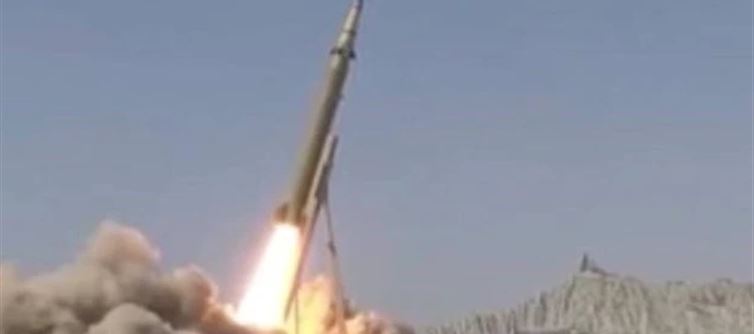
The united states created the cutting-edge anti-ballistic missile defense system known as Terminal High Altitude Area Defense, or THAAD. It is intended to intercept and eliminate ballistic missiles with short, medium, and intermediate ranges when they are in their terminal phase, or fall.
THAAD is perhaps the best in its class, which protects against high-altitude, short- and medium-range ballistic missiles. According to reports, israel received a second THAAD battery from the US in May. To prevent such strikes by iran and its supporters, the united states supplied a THAAD battery to israel in october of last year. THAAD complements Israel's already strong anti-missile defenses and is an essential component of the US military's multi-layered air defense systems.
The missile's name is a reference to Major General qasem soleimani, who was killed in january 2020 in an American drone attack near Baghdad international Airport in iraq while soleimani was en route to meet with the prime minister of Iraq. The strike was ordered by then-US President Donald Trump. After Iran's supreme Leader ali Khamenei, soleimani was regarded as the country's second most powerful individual and commander of the Quds Force.
What makes Qassem Basir a deadly missile
The medium-range ballistic missile (MRBM) Qassem Basir represents a major development in Tehran's missile arsenal. The missile, which bears General Qasem Soleimani's name, is a follow-up to the 2020 Shahid Haj Qassem. The Qassem Basir is a powerful weapon in Iran's military arsenal, with an estimated range of 1,200 kilometers and improved navigation technologies that allow it to breach sophisticated missile defense systems.
Its two-stage solid-fuel motor can carry a 500 kg payload and provides stable storage and quick launch readiness. By combining inertial navigation with an electro-optical infrared seeker, it enables terminal-phase target detection without the need for GPS. The missile's survivability against interception is improved by its maneuverable reentry vehicle (MaRV), which can perform high-speed evasive movements.
Even in electronic warfare scenarios, the Qassem Basir's sophisticated guiding system, which includes an infrared seeker, allows for accurate aiming. This capability guarantees the successful neutralization of vital infrastructure, including command centers and airfields. Unpredictable reentry trajectories made possible by the MaRV design of the missile make it more difficult for enemy missile defense systems to intercept it. Iran asserts that their rate of interception is minimal, while other evaluations may differ.
THAAD is perhaps the best in its class, which protects against high-altitude, short- and medium-range ballistic missiles. According to reports, israel received a second THAAD battery from the US in May. To prevent such strikes by iran and its supporters, the united states supplied a THAAD battery to israel in october of last year. THAAD complements Israel's already strong anti-missile defenses and is an essential component of the US military's multi-layered air defense systems.
The missile's name is a reference to Major General qasem soleimani, who was killed in january 2020 in an American drone attack near Baghdad international Airport in iraq while soleimani was en route to meet with the prime minister of Iraq. The strike was ordered by then-US President Donald Trump. After Iran's supreme Leader ali Khamenei, soleimani was regarded as the country's second most powerful individual and commander of the Quds Force.
What makes Qassem Basir a deadly missile
The medium-range ballistic missile (MRBM) Qassem Basir represents a major development in Tehran's missile arsenal. The missile, which bears General Qasem Soleimani's name, is a follow-up to the 2020 Shahid Haj Qassem. The Qassem Basir is a powerful weapon in Iran's military arsenal, with an estimated range of 1,200 kilometers and improved navigation technologies that allow it to breach sophisticated missile defense systems.
Its two-stage solid-fuel motor can carry a 500 kg payload and provides stable storage and quick launch readiness. By combining inertial navigation with an electro-optical infrared seeker, it enables terminal-phase target detection without the need for GPS. The missile's survivability against interception is improved by its maneuverable reentry vehicle (MaRV), which can perform high-speed evasive movements.
Even in electronic warfare scenarios, the Qassem Basir's sophisticated guiding system, which includes an infrared seeker, allows for accurate aiming. This capability guarantees the successful neutralization of vital infrastructure, including command centers and airfields. Unpredictable reentry trajectories made possible by the MaRV design of the missile make it more difficult for enemy missile defense systems to intercept it. Iran asserts that their rate of interception is minimal, while other evaluations may differ.




 click and follow Indiaherald WhatsApp channel
click and follow Indiaherald WhatsApp channel